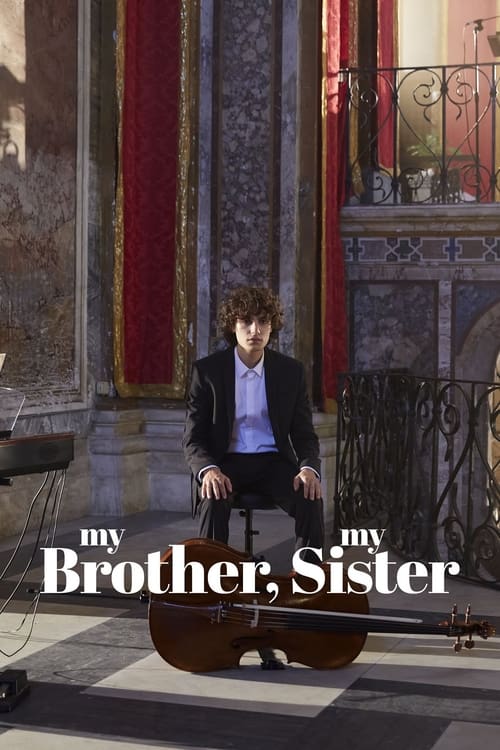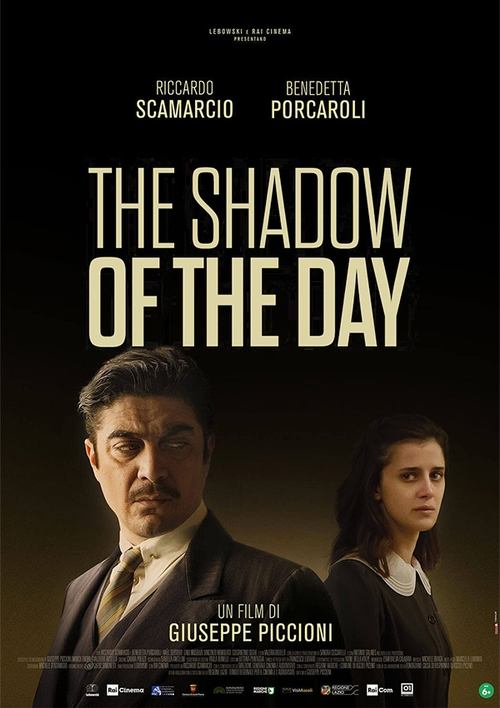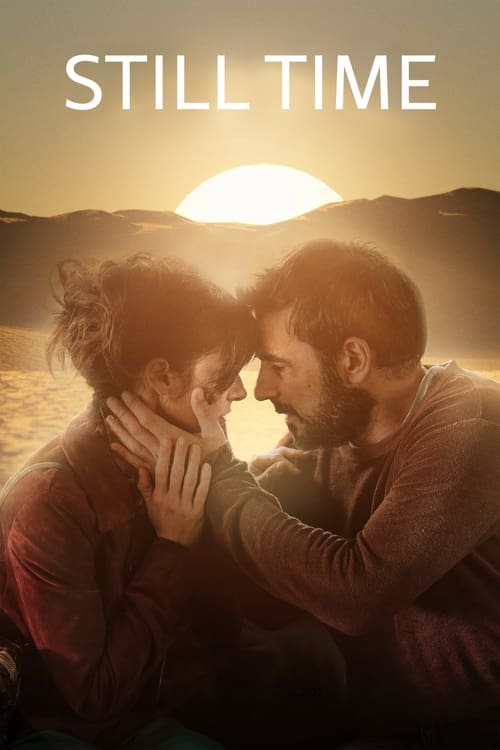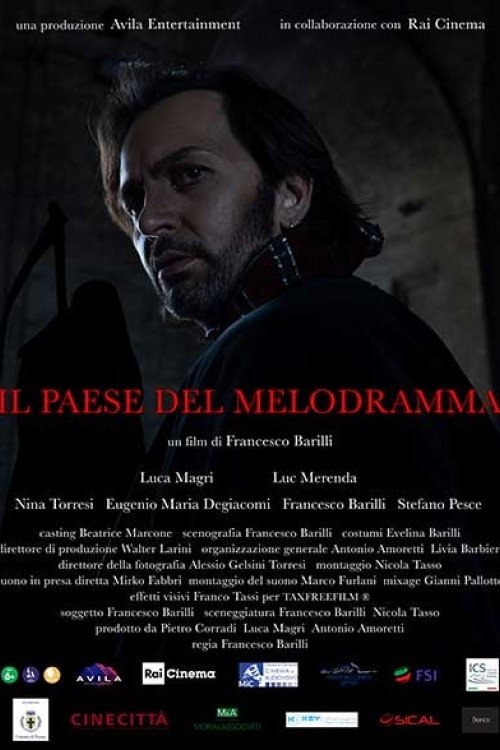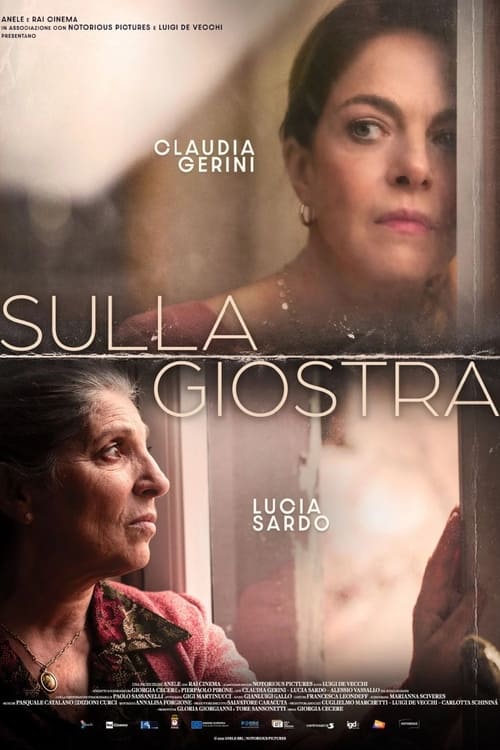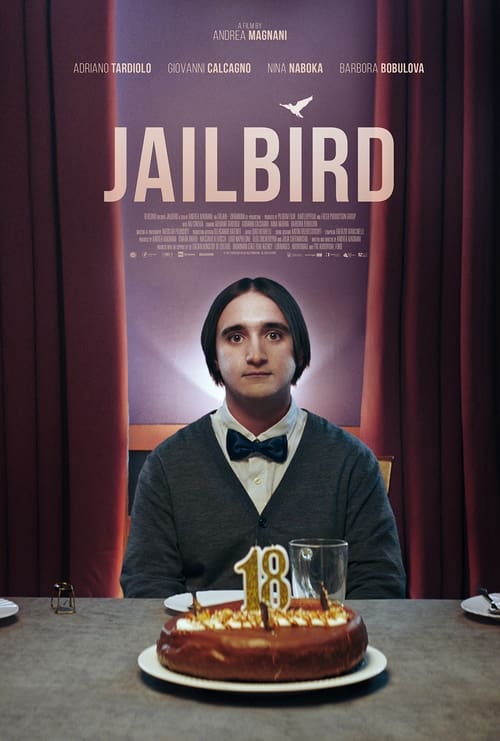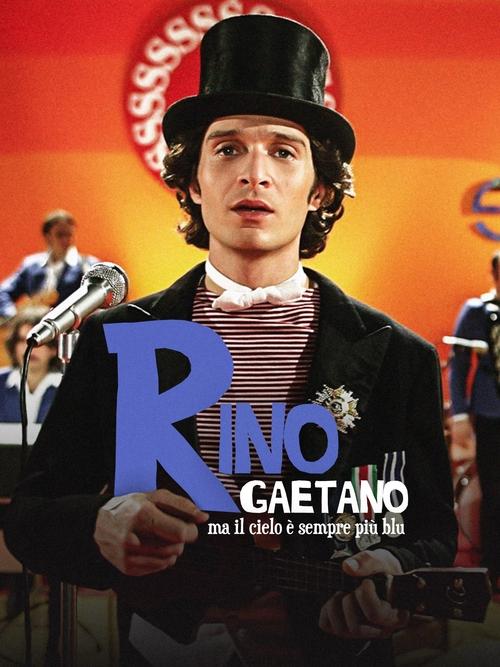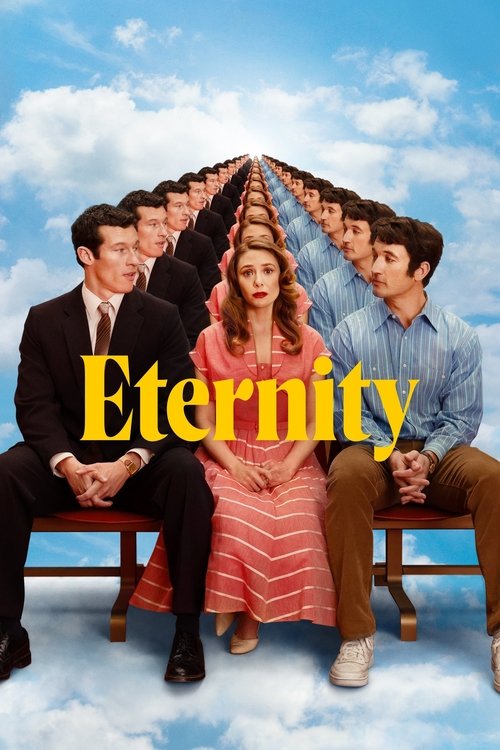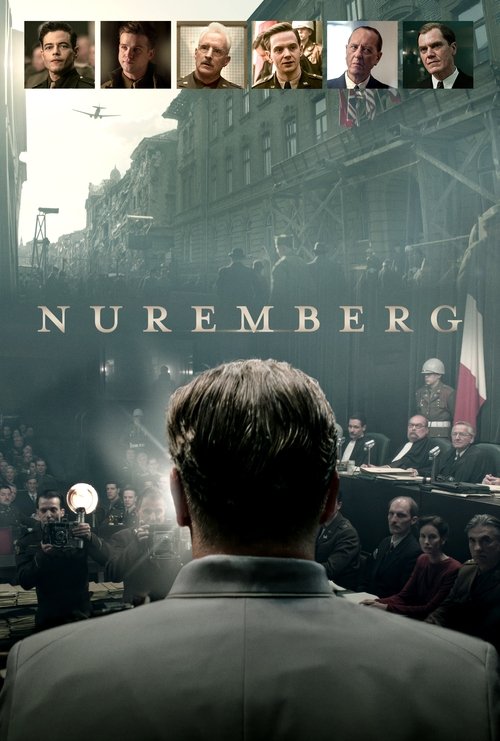
Ask Your Own Question
What is the plot?
The film opens on a somber, overcast day in a small coastal town in Italy, where the Costa family gathers for the funeral of Giulio Costa, the family patriarch. The air is thick with grief, but also tension, as the estranged siblings, Tesla Costa and Nikola "Nik" Costa, stand among the mourners. Tesla, played by Claudia Pandolfi, is tightly wound and visibly anxious, clutching her children close--Sebastiano, a talented but troubled cellist, and Carolina, a rebellious young artist. Tesla's demeanor is rigid, her grief mingled with frustration. Across the cemetery, Nik, portrayed by Alessandro Preziosi, arrives late, dressed casually, almost defiantly. He steps forward to deliver a speech that immediately unsettles the family.
"We are all just stardust," Nik declares, his voice calm yet philosophical. "We come from the stars, and we return to the stars." His words, meant to comfort, instead deepen the rift. Tesla snaps back sharply, "You always have to make everything about you, don't you?" Their exchange sets the tone for the film: a family fractured by years of silence and misunderstanding, forced to confront their past.
The cause of this gathering--the death of Giulio Costa--is natural, a quiet passing that nonetheless unleashes decades of buried resentment. Before the film's events, Nik has been absent for over twenty years, having left the family to escape the suffocating routines Tesla imposed to protect Sebastiano, who was diagnosed with schizophrenia five years prior. Sebastiano, played by Francesco Cavallo, is introduced at the funeral with subtle tics and murmurs, speaking softly to his imaginary friend, Kelvin--a Martian who invites him to escape Earth's troubles. Carolina, portrayed by Ludovica Martino, stands apart, addressing her mother by her first name, a sign of their strained relationship.
Giulio's will reveals a surprising condition: Nik and Tesla must live together in the family home for one year to inherit the estate. This large, slightly dilapidated coastal house, cluttered with Post-it notes reminding Sebastiano of his medication and routines, becomes the crucible for the family's unfolding drama. The house, filled with musical instruments and artwork, is both a sanctuary and a prison--a symbol of the family's dysfunction and the rigid control Tesla exercises in her desperate attempt to protect Sebastiano.
From the moment Nik arrives at the house, his free-spirited and impulsive nature clashes violently with Tesla's controlling demeanor. Nik's casual attitude and disregard for the strict routines Tesla enforces ignite frequent arguments. Tesla's anxiety is palpable as she tries to maintain order for Sebastiano's sake, while Nik's presence threatens to unravel the fragile balance. Tesla's overprotectiveness extends to her children, especially Sebastiano, whose schizophrenia manifests in vivid hallucinations and paranoia, and Carolina, who chafes under her mother's grip.
Despite the tension, Nik slowly forms a bond with Sebastiano. On the nearby beach, a place of freedom and escape, Nik takes Sebastiano kite-surfing, encouraging him to embrace moments of joy beyond his routines. The beach scenes are visually striking: the crashing waves, the bright kites soaring against the gray sky, and the tentative smiles between uncle and nephew. For Sebastiano, the beach is a rare place where his fears momentarily lift.
However, this fragile peace shatters when Nik encounters Emma, Sebastiano's piano accompanist, at a local bar. Sebastiano, who harbors deep affection for Emma, misinterprets their interaction, believing Nik is trying to steal her away. Panic overwhelms Sebastiano, triggering a severe mental health episode. Tesla, already wary of Nik's disruptive influence, blames him for destabilizing Sebastiano. The argument between Tesla and Nik escalates, culminating in Nik deciding to leave the house, feeling unwelcome and misunderstood.
Meanwhile, Tesla and Carolina's relationship begins to thaw. On a day out, Carolina finally calls her mother "Mama," a small but significant step toward reconciliation. Their conversation reveals Carolina's resentment over the sacrifices she has made caring for Sebastiano and her desire to forge her own path, symbolized by her use of Giulio's old RV to start a new life. The scene is tender, with Carolina's vulnerability breaking through Tesla's stern exterior.
As Sebastiano's condition worsens, he agrees to perform at a local concert hall, a pivotal moment intended to mark a breakthrough in his battle with schizophrenia. The concert hall, filled with strangers and bright lights, becomes a crucible of anxiety. When Sebastiano steps onto the stage, the overwhelming crowd triggers a panic attack. In a desperate flight, he runs out of the venue, disoriented and terrified.
Tragically, as Sebastiano crosses the street, he is struck by a car. The accident is a devastating turning point. He is rushed to a sterile hospital, a stark contrast to the warmth of the family home. There, critically injured, Sebastiano's fate hangs in the balance.
At the hospital, the fractured family converges. The crisis forces Nik and Tesla to confront their differences and come together for Sebastiano's sake. In a poignant scene, Sebastiano, lucid for a moment, speaks to his family. He makes heartfelt amends, urging his mother to start living again beyond the confines of protecting him. His words pierce Tesla's armor, igniting a transformation in her.
The final scenes are suffused with hope and reconciliation. The family gathers at the beach to scatter Giulio's ashes, the same place where Sebastiano found fleeting freedom. In a powerful visual moment, Sebastiano, who once confessed to Kelvin his fear of water, walks confidently into the sea, symbolically conquering his fears and embracing life despite his illness.
The film closes on the family embracing, a tableau of healing and acceptance. Though Sebastiano's journey with schizophrenia is ongoing, the Costa family's renewed bonds offer a foundation for hope and support. The legacy of Giulio Costa, once a source of division, becomes the catalyst for their fragile but genuine reunion. The story ends not with perfect resolution but with the promise of growth, forgiveness, and the enduring power of family.
What is the ending?
In the ending of "My Brother, My Sister," the siblings, who have faced numerous challenges and conflicts throughout the film, come to a resolution regarding their family dynamics and personal growth. They find a way to reconcile their differences and embrace their shared responsibilities, ultimately leading to a sense of unity and hope for the future.
As the film approaches its conclusion, the tension between the siblings, particularly between the older brother, the pragmatic and somewhat distant character, and the younger sister, who is more emotional and nurturing, reaches a pivotal moment. They confront their past grievances and misunderstandings, leading to a heartfelt exchange that allows them to understand each other's perspectives better.
In the final scenes, the siblings gather together, symbolizing their newfound bond. They make plans for the future, indicating a commitment to support one another and face whatever challenges may come. The film closes on a hopeful note, suggesting that despite their struggles, they have found a way to move forward together.
As the film "My Brother, My Sister" nears its conclusion, the atmosphere is charged with a mix of tension and anticipation. The siblings, who have been at odds for much of the story, find themselves at a crossroads. The older brother, a figure of responsibility and practicality, stands in the living room of their family home, his expression a blend of frustration and concern. He has been grappling with the weight of their family legacy and the expectations that come with it.
The younger sister, embodying warmth and emotional depth, enters the room, her eyes reflecting a mixture of hurt and determination. The air is thick with unspoken words as they both realize that they can no longer avoid the issues that have driven a wedge between them. The scene is intimate, the lighting soft, casting shadows that mirror the complexities of their relationship.
In a pivotal moment, the brother speaks first, his voice steady but laced with vulnerability. He acknowledges the pain of their shared past, the loss of their parents, and the burden of their responsibilities. The sister listens intently, her heart aching as she recalls her own struggles to connect with him. She responds, her voice trembling with emotion, expressing her feelings of abandonment and the longing for a familial bond that has felt fractured.
As they exchange their truths, the camera captures their expressions--tears welling in the sister's eyes, a flicker of understanding softening the brother's stern demeanor. This moment of vulnerability is a turning point; they begin to see each other not just as siblings but as individuals shaped by their experiences.
The scene shifts to a montage of their daily lives, now intertwined. They are seen working together in the garden, planting seeds that symbolize their commitment to nurturing their relationship. Laughter fills the air as they share light-hearted moments, a stark contrast to the earlier tension. The visuals are vibrant, showcasing the beauty of their surroundings and the warmth of their growing bond.
In the final act, the siblings gather with their extended family and friends for a celebration, a gathering that signifies their acceptance of one another and their shared future. The atmosphere is joyful, filled with music and laughter. The brother, once reserved, now engages openly with the guests, while the sister radiates happiness, her smile a testament to the healing that has taken place.
As the film draws to a close, the camera pans out, capturing the siblings standing side by side, looking towards the horizon. Their expressions are filled with hope and determination, a silent promise to support one another through whatever life may bring. The screen fades to black, leaving the audience with a sense of closure and the understanding that family, despite its challenges, can be a source of strength and love.
Is there a post-credit scene?
The movie "My Brother, My Sister," produced in 2021, does not contain a post-credit scene. The film concludes its narrative without any additional scenes or content after the credits roll. The story wraps up with the resolution of the characters' arcs, focusing on the themes of family, reconciliation, and the bonds that tie siblings together. The ending emphasizes the emotional growth of the characters and their newfound understanding of one another, leaving the audience with a sense of closure.
What is the relationship between the main characters, Nick and Stella?
Nick and Stella are siblings who have been estranged for years due to their differing lifestyles and personal choices. Nick is a free-spirited artist living in Italy, while Stella is a more grounded and responsible individual who has taken on the role of a mother figure to her children after their father's death. Their relationship is strained, filled with unresolved issues and emotional baggage, which they must confront throughout the film.
How does the death of their father impact Nick and Stella's reunion?
The death of their father serves as the catalyst for Nick and Stella's reunion. It forces them to come together to deal with the aftermath of his passing, including the care of their younger siblings. This shared responsibility brings to the surface their long-standing grievances and unresolved feelings, making their interactions charged with tension and emotional conflict.
What challenges do Nick and Stella face while caring for their younger siblings?
Nick and Stella face numerous challenges while caring for their younger siblings, including financial difficulties, differing parenting styles, and the emotional turmoil stemming from their father's death. They struggle to find common ground in their approaches to family life, leading to conflicts that test their relationship and force them to confront their past.
How does the setting of Italy influence the story and the characters' development?
The picturesque setting of Italy plays a significant role in the story, providing a backdrop that contrasts with the emotional turmoil the characters experience. The vibrant landscapes and cultural richness of Italy serve as a reminder of the beauty of family and connection, while also highlighting the characters' internal struggles. The setting becomes a character in itself, influencing their interactions and decisions as they navigate their complex family dynamics.
What is the significance of the family home in the story?
The family home is a central symbol in the story, representing both a place of comfort and a source of conflict. It is where Nick and Stella confront their shared past and the memories of their father. The home embodies their childhood and the unresolved issues that linger between them. As they work together to restore it, the home becomes a metaphor for their attempts to rebuild their fractured relationship and create a sense of family unity.
Is this family friendly?
"My Brother, My Sister" is a family drama that explores themes of loss, reconciliation, and the complexities of familial relationships. While it is generally suitable for a family audience, there are a few potentially objectionable or upsetting aspects that may affect children or sensitive viewers:
-
Death and Grief: The film deals with the death of a parent, which is a central theme. Scenes depicting grief and mourning may be emotionally heavy for younger viewers.
-
Family Conflict: There are moments of tension and conflict between family members, including arguments and emotional confrontations that may be intense.
-
Personal Struggles: Characters face personal challenges, including issues related to responsibility, identity, and emotional turmoil, which may be difficult for some viewers to process.
-
Dramatic Moments: Certain scenes may contain heightened emotional stakes, which could be distressing, particularly for those sensitive to themes of loss and familial discord.
Overall, while the film carries a heartfelt message about family and connection, its exploration of serious themes may require parental guidance for younger audiences.

